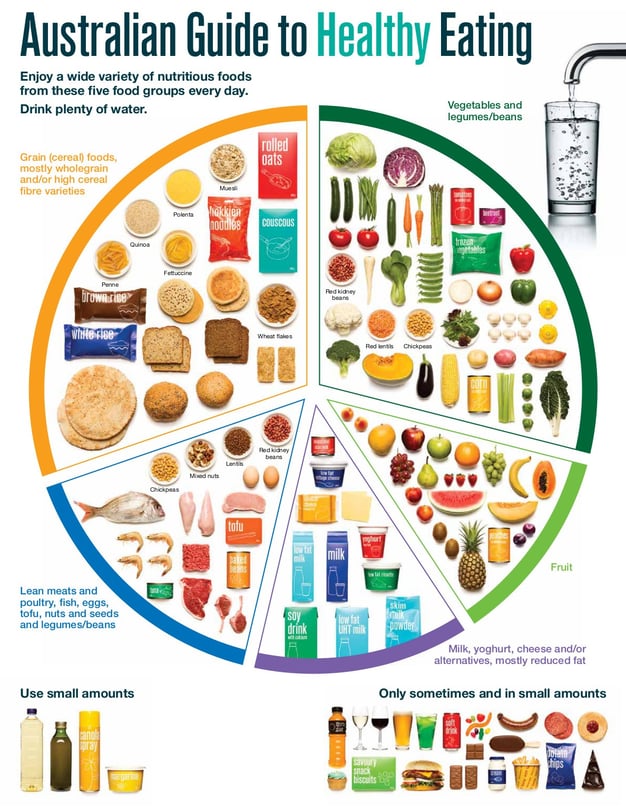
Healthy diet
What is a healthy diet?
Maintaining a healthy diet is essential for overall well-being. According to the Australian Dietary Guidelines, a balanced diet includes a variety of nutritious foods from the five food groups: vegetables, fruits, whole grains, lean proteins, and dairy or dairy alternatives.
It is recommended to limit processed foods high in added sugars, salt, and unhealthy fats.
Drinking plenty of water, practicing portion control, and making mindful food choices contribute to better health and help prevent chronic diseases like heart disease and diabetes.
A well-balanced diet, combined with regular physical activity, supports long-term well-being.
What are the major food groups?
The five major food groups as outlined in the Australian Guide to Healthy Eating include:
Vegetables and legumes or beans – at least 5 serves per day
Grains, cereals, and high-fibre varieties – 4 to 6 serves per day
Fruit – 2 serves per day
Lean meats, poultry, fish, eggs, tofu, seeds, and nuts – 2.5 to 3 serves per day
Dairy, yoghurt, and other alternatives – 2.5 to 4 serves a day


What does it mean, really?
For an average 80 kg male, a typical daily meal plan might look like this:
Breakfast
A bowl of whole grain oats with low-fat milk, topped with a banana and a handful of almonds.
A glass of water or unsweetened tea.
Snack
A small tub of Greek yogurt with mixed berries.
Lunch
A grilled chicken salad with a mix of leafy greens, tomatoes, cucumbers, and olive oil dressing.
A slice of whole grain bread.
A glass of water.
Afternoon Snack
A handful of unsalted nuts or a boiled egg with a piece of fruit.
Dinner
A grilled salmon fillet (or lean beef) with roasted sweet potatoes and steamed broccoli.
A small bowl of brown rice or quinoa.
A glass of water.
Extras
Limit processed foods high in sugar, salt, and unhealthy fats.
Reduce alcohol intake and sugary drinks.
Stay hydrated with at least 2-3 liters of water daily.


